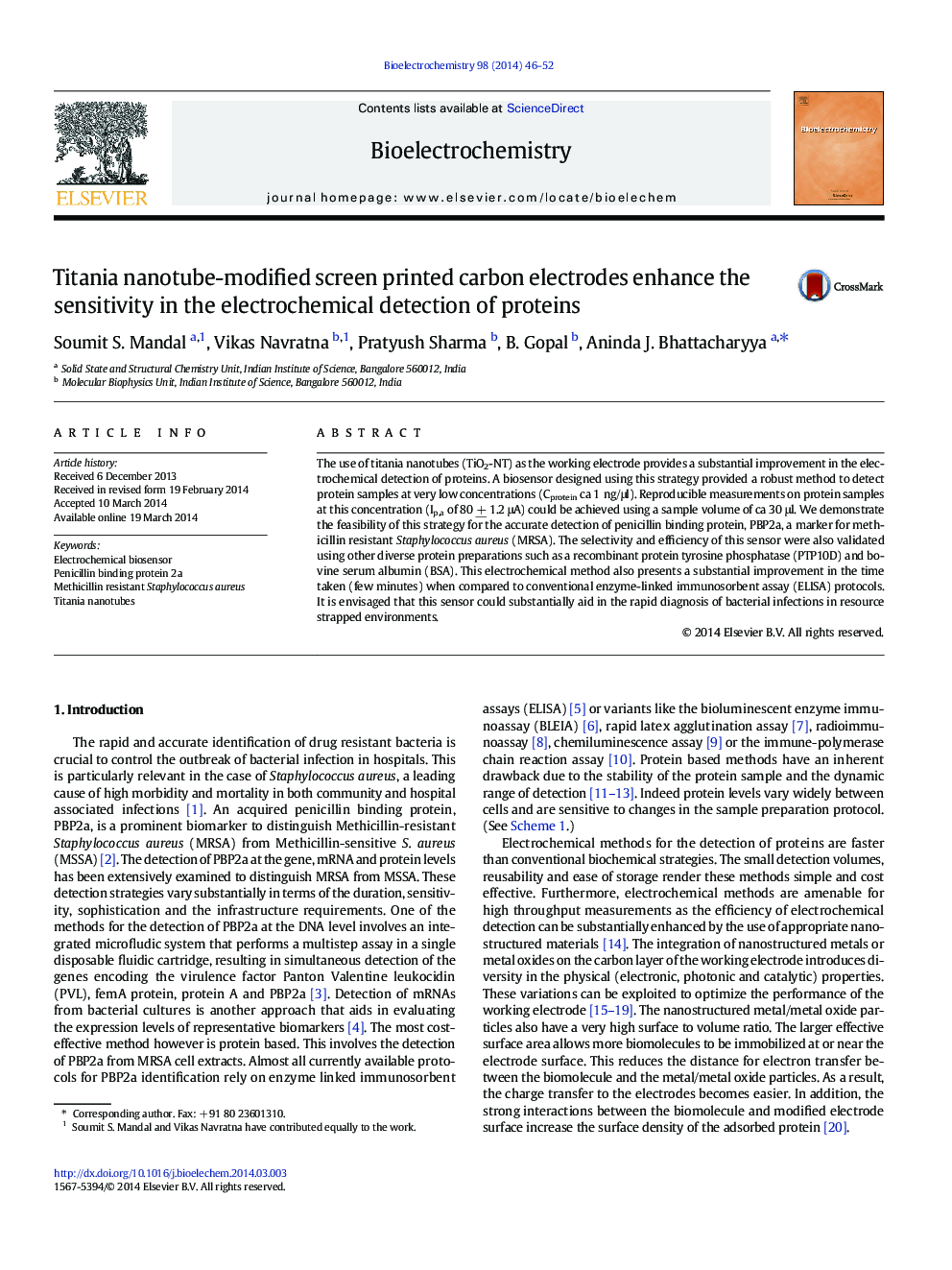| Article ID | Journal | Published Year | Pages | File Type |
|---|---|---|---|---|
| 1271021 | Bioelectrochemistry | 2014 | 7 Pages |
•Titania nanotubes substantially enhances sensitivity towards detection of proteins•Current variations measure protein concentrations in the electrochemical sensor•Staphylococcus aureus PBP2a could be reproducibly detected in crude cell lysates
The use of titania nanotubes (TiO2-NT) as the working electrode provides a substantial improvement in the electrochemical detection of proteins. A biosensor designed using this strategy provided a robust method to detect protein samples at very low concentrations (Cprotein ca 1 ng/μl). Reproducible measurements on protein samples at this concentration (Ip,a of 80 + 1.2 μA) could be achieved using a sample volume of ca 30 μl. We demonstrate the feasibility of this strategy for the accurate detection of penicillin binding protein, PBP2a, a marker for methicillin resistant Staphylococcus aureus (MRSA). The selectivity and efficiency of this sensor were also validated using other diverse protein preparations such as a recombinant protein tyrosine phosphatase (PTP10D) and bovine serum albumin (BSA). This electrochemical method also presents a substantial improvement in the time taken (few minutes) when compared to conventional enzyme-linked immunosorbent assay (ELISA) protocols. It is envisaged that this sensor could substantially aid in the rapid diagnosis of bacterial infections in resource strapped environments.
